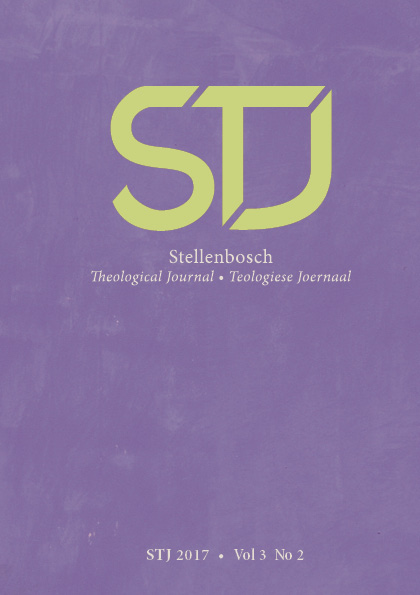Forty years of theo-mission education in Eastern Africa: The case of St. Andrew’s Kabare, Kenya (1977–2017)
DOI:
https://doi.org/10.17570/stj.2017.v3n2.a18Keywords:
Theo-mission studies, holistic education, theological education in Kenya, mission histories in Eastern AfricaAbstract
The article seeks to explore the intrigues behind the establishment of St Andrew’s College of Theology and Development in Eastern Africa, at the Kabare Hill of Kenya, from May 1977. How does the legacy of the pioneer European missionaries to Eastern Africa (I refer to Krapf, Hannington, Tucker, Parker, McGregor, Crawford, Beecher among others) contribute to the current state of affairs in mission education and the establishment of St. Andrew’s College in particular? The materials in this article are largely gathered through extensive reading of relevant literature, face-to-face interviews, oral sources and archival sources. The article coincides with the 40th anniversary celebration of St Andrew’s College, Kabare – that began in 1977 as an institute for mission and evangelism. Through showcasing St Andrew’s, the article has methodologically revisited the 19th and 20th European missionary legacy that inspired the current growth of the church in Eastern Africa. In turn, it has established that despite the gains so far made, there is still room in authenticating theological education in Eastern Africa and the rest of the tropical Africa.Published
How to Cite
Issue
Section
License
Copyright (c) 2017 Julius Gathogo

This work is licensed under a Creative Commons Attribution 4.0 International License.
https://creativecommons.org/licenses/by/4.0/
Authors who publish with this journal agree to the following terms:
Authors retain copyright and grant the journal right of first publication with the work simultaneously licensed under a Creative Commons Attribution License that allows others to share the work with an acknowledgement of the work's authorship and initial publication in this journal.
Authors are able to enter into separate, additional contractual arrangements for the non-exclusive distribution of the journal's published version of the work (e.g., post it to an institutional repository or publish it in a book), with an acknowledgement of its initial publication in this journal.
Authors are permitted and encouraged to post their work online (e.g., in institutional repositories or on their website) prior to and during the submission process, as it can lead to productive exchanges, as well as earlier and greater citation of published work.
Please note that erroneous copyright information is given in the PDFs before Volume 9, 2023.



